Diana, Princess of Wales
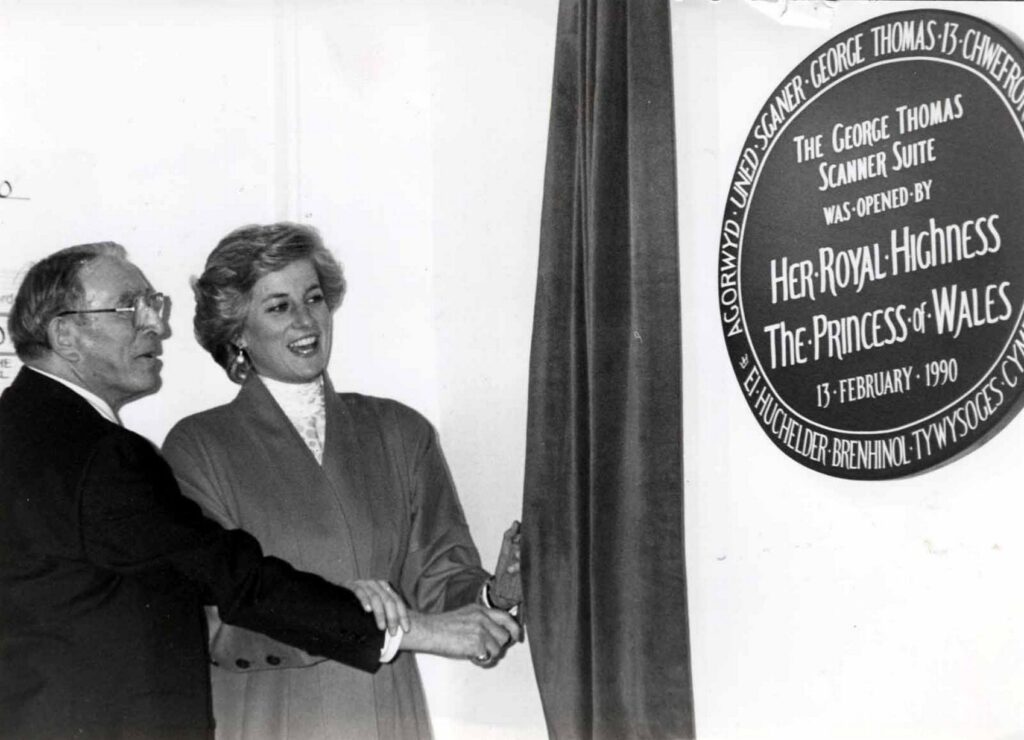
PRINCESS DIANA was Princess of Wales while married to Prince Charles, the heir to the British throne. The mother of Prince William and Prince Harry, Diana’s activism and glamour made her an international icon and earned her an enduring popularity as well as an unprecedented public scrutiny, exacerbated by her tumultuous private life.
She became Lady Diana Spencer after her father inherited the title of Earl Spencer in 1975 and married Prince Charles on July 29, 1981, soon developing into one of the most adored members of the British royal family.
As Princess of Wales, Diana undertook royal duties on behalf of the Queen and represented her at functions across the Commonwealth realms.
She was initially noted for her shyness, but her charisma and friendliness endeared her to the public and would help her reputation survive the later acrimonious collapse of her marriage.
Considered to be very photogenic, Diana was a leader of fashion in the 1980s and 1990s.
Charles and Diana had two sons, but their marriage suffered due to their incompatibility. The couple separated in 1992, soon after the breakdown of their relationship became public knowledge.
Charles resumed his relationship with his former girlfriend Camilla Parker Bowles, and Diana later began an affair with Major James Hewitt, the family’s former riding instructor.
These affairs were exposed in May 1992 with the publication of Andrew Morton’s book, Diana: Her True Story. The book, which also revealed the Princess’s allegedly suicidal unhappiness, caused a media storm.
The details of the royal couple’s marital difficulties became increasingly publicised, and the marriage ended in divorce in 1996.
Diana died on August 31, 1997, from injuries she sustained in a car crash in the Pont de l’Alma tunnel, Paris. She is remembered as what Prime Minister Tony Blair called the “People’s Princess” because of her widespread popularity and global humanitarian efforts.
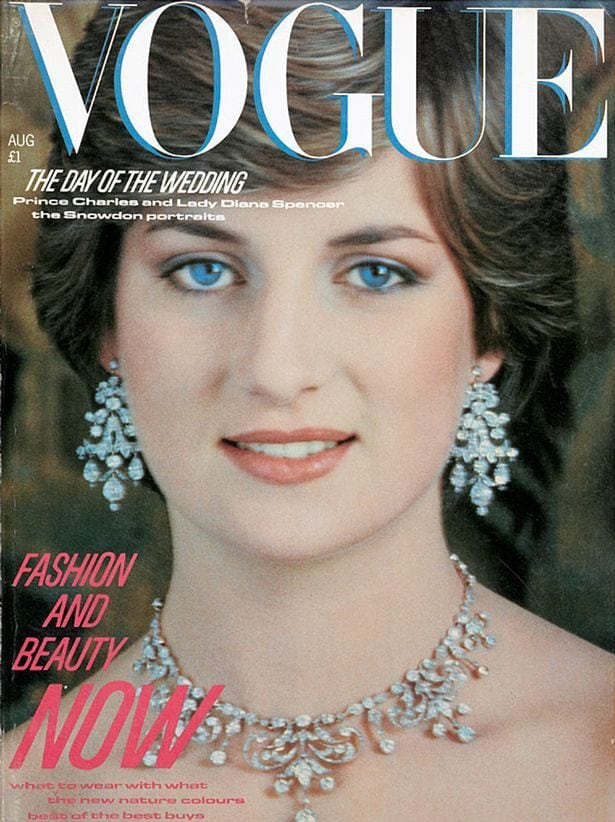
Diana Spencer was born on July 1, 1961, near Sandringham, England, the daughter of Edward John Spencer, Viscount Althorp, and Frances Ruth Burke Roche, Viscountess Althorp (later known as the Honorable Frances Shand Kydd). Her parents divorced when Diana was young and her father won custody of the children.
Diana had two older sisters, Lady Jane Fellowes and Lady Sarah McCorquodale, and a younger brother, Charles Spencer, 9th Earl Spencer.
Following her initial education at home, Diana attended Riddlesworth Hall School and then West Heath School. Although she was known for her shyness while growing up, she showed an interest in music and dancing. She became Lady Diana Spencer after her father inherited the title of Earl Spencer in 1975.
Diana had a great fondness for children. After attending finishing school at Institut Alpin Videmanette in Switzerland, she moved to London. She began working with children, eventually becoming an assistant at Young England Kindergarten.
Diana began dating Prince Charles, heir to the British throne who was 13 years her senior, in 1977. The couple first met when Diana was a child and reportedly played with Charles’s younger siblings, Prince Andrew and Prince Edward, while her family rented Park House, an estate owned by Queen Elizabeth II.
Charles was usually the subject of media attention, and his courtship of Diana was no exception. The press and the public were fascinated by this seemingly odd couple — the reserved, garden-loving prince and the shy young woman with an interest in fashion and popular culture.
On February 6, 1981, Prince Charles proposed to Diana with an 18-carat white gold ring topped with a 12-carat oval Ceylon sapphire surrounded by 14 solitaire diamonds. It was made by the crown jeweler Garrard and reportedly inspired by a brooch created in 1840 for Prince Albert as a wedding present for Queen Victoria. The ring reportedly cost Charles £28,000 at the time (about $35,000).
After Diana’s death, her son Prince William proposed with the ring to Kate Middleton, Duchess of Cambridge.
Following the engagement, Diana left her occupation as a kindergarten assistant and lived for a short period at Clarence House, which was the home of the Queen Mother. She then lived at Buckingham Palace until the wedding.
Diana Spencer became Diana, Princess of Wales, when she married Charles on July 29, 1981. Their wedding took place at St Paul’s Cathedral in the presence of 2,650 guests. The couple arrived separately and departed together by carriage ride through the streets of London.
Diana wore a taffeta wedding dress made with silk and antique lace and 10,000 pearls, created by husband-and-wife design team David and Elizabeth Emanuel. She donned an 18th Century Spencer family tiara with a 25-foot veil. Her ensemble barely fit in the carriage, and it took Diana three and a half minutes to walk down the aisle.
The royal wedding ceremony was broadcast on television around the world; nearly one billion people from 74 countries tuned in to see what many considered to be the wedding of the century.

Diana and Charles had two sons together: Prince William Arthur Philip Louis, born on June 21, 1982, and Prince Henry Charles Albert David — known widely as ‘Prince Harry’ — born on September 15, 1984.
However, after the couple’s fairy-tale wedding, Diana felt overwhelmed by her royal duties and the intense media coverage of nearly every aspect of her life.
She began to develop and pursue her own interests. She served as a strong supporter of many charities and worked to help the homeless, people living with HIV and AIDS and children in need.
She was mindful of people’s thoughts and feelings, and later revealed her wish to become a beloved figure among the people, saying in her 1995 interview, that “[she would] like to be a queen of people’s hearts, in people’s hearts.”
Diana’s separation from Charles was announced as an “amicable separation” in December 1992 by British Prime Minister John Major, who read a statement from the royal family to the House of Commons. Their divorce was finalized in August 1996.
The couple became estranged over the years and Diana struggled with depression and bulimia. According to The Diana Chronicles, a book by Tina Brown, Diana had fallen in love with Hasnat Khan, a Pakistani heart surgeon whom she met in 1995.
Queen Elizabeth II urged Diana and Charles to officially end their marriage. Diana retained her title of ‘Princess of Wales’ and her apartments at Kensington Palace, but she agreed to give up the title ‘Her Royal Highness’ and any claim to the British throne.
Following her divorce, Diana devoted herself to her sons and charitable efforts, including raising awareness about the dangers of left-over landmines in war-torn Angola. She maintained a high level of popularity with the public.
The day after her divorce, she announced her resignation from over 100 charities and retained patronages of only six: Centrepoint, English National Ballet, Great Ormond Street Hospital, The Leprosy Mission, National AIDS Trust, and the Royal Marsden Hospital.
In June 1997, her dresses and suits were sold at Christie’s auction houses in London and New York, and the proceeds that were earned from these events were donated to charities.
That year, Diana whipped the British tabloids into a frenzy when she began dating Egyptian film producer and playboy Dodi Fayed. Fayed invited Diana and her family onto his yacht in the south of France.
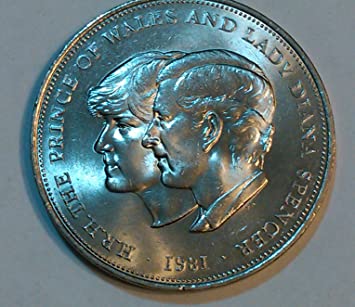
The couple reportedly met at a 1986 polo match when Fayed and Charles played on opposing teams. They reconnected and openly dated over the summer of 1997, spending time together in Sardinia, the south of France and Paris.
Their courtship was widely covered in the tabloids. It was reported that some members of the royal family and former Prime Minister Tony Blair did not approve of their relationship. Diana’s butler and confidant Paul Burrell told the BBC that Fayed was “a rebound” from her relationship with Hasnat Khan.
While visiting Paris, Diana and Dodi Fayed were involved in a car crash after trying to escape from the paparazzi early in the morning of August 31, 1997. Fayed and the driver were pronounced dead at the scene. Diana initially survived the crash but succumbed to her injuries at a Paris hospital a few hours later. She was 36 years old.
News of her sudden death shocked the world. Queen Elizabeth II, who was criticized for not immediately responding publicly to Diana’s death, made a televised address from Buckingham Palace on September 5, in which she said: “No one who knew Diana will ever forget her. Millions of others who never met her, but felt they knew her, will remember her. I, for one, believe there are lessons to be drawn from her life and from the extraordinary and moving reaction to her death. I share in your determination to cherish her memory.”
Following an investigation into Diana’s fatal car accident, a report released in 1999 determined that the driver was at fault for driving at a high speed while under the influence of alcohol and antidepressant drugs. Charges were dropped against several photographers who were initially blamed for causing the crash.
Despite the report, rumors persisted for years about alternative reasons for the accident. One conspiracy theory held that it was part of an assassination arranged by the royal family, although no additional evidence emerged to support that theory.
On the morning of September 6, Diana’s funeral procession commenced from Kensington Palace, her coffin resting on a gun carriage drawn by six black horses. Thousands of mourners packed the street to watch, with 15-year-old William and 12-year-old Harry joining the final stretch of the four-mile procession for their mother.
An estimated 2.5 billion people tuned in on television to watch the ceremony at Westminster Abbey, which featured a powerful eulogy from Diana’s brother, Earl Charles Spencer.
Lord Spencer said of his sister, “Diana was the very essence of compassion, of duty, of style, of beauty. All over the world she was a symbol of selfless humanity. All over the world, a standard-bearer for the rights of the truly downtrodden, a very British girl who transcended nationality. Someone with a natural nobility who was classless and who proved in the last year that she needed no royal title to continue to generate her particular brand of magic.”
Re-written in tribute to Diana, the song Candle in the Wind was performed by Elton John at the funeral service.
Diana’s body was laid to rest at a grave-site on a small island at her family’s estate, Althorp.
In 2007, just before the 10th anniversary of her death, William and Harry honoured their mother with a special concert that took place on what would have been her 46th birthday. The proceeds of the event went to charities supported by Diana and her sons.
William, Duke of Cambridge, and his wife Kate Middleton also remembered Diana when naming their second child, Princess Charlotte Elizabeth Diana, who was born on May 2, 2015.
Continuing her charitable efforts, the Diana, Princess of Wales Memorial Fund was founded after her death to provide resources for palliative care, penal reform, asylum and other issues. In 2013, the fund was incorporated into The Royal Foundation of The Duke and Duchess of Cambridge and Prince Harry, Duke of Sussex.
Diana will be remembered for her encounters with sick and dying patients, and the poor and unwanted whom she used to comfort, an action that earned her more popularity.
She would say: “I love to hold people’s hands when I visit hospitals, even though they are shocked because they haven’t experienced anything like it before, but to me it is a normal thing to do” and “hugs can do great amounts of good – especially for children.”
The Princess began her work with AIDS victims in the 1980s. She was not averse to making physical contact with AIDS patients, though it was still unknown whether the disease could be spread that way. In 1987, she held hands with an AIDS patient in one of her early efforts to de-stigmatise the condition.
Diana noted: “HIV does not make people dangerous to know. You can shake their hands and give them a hug. Heaven knows they need it. What’s more, you can share their homes, their workplaces, and their playgrounds and toys.”
In 1991, she hugged one victim during a visit to the AIDS ward of the Middlesex Hospital, which she had opened in 1987 as the first hospital unit dedicated to this cause in the UK.
“Anywhere I see suffering, that is where I want to be, doing what I can,” she said. “I want to walk into a room, be it a hospital for the dying or a hospital for sick children, and feel that I am needed. I want to do, not just to be.”
In March 1997, Diana visited South Africa, where she met with President Nelson Mandela. On November 2, 2002, Mandela announced that the Nelson Mandela Children’s Fund would be teaming up with the Diana, Princess of Wales Memorial Fund to help victims of AIDS. They had planned the combination of the two charities a few months before her death.
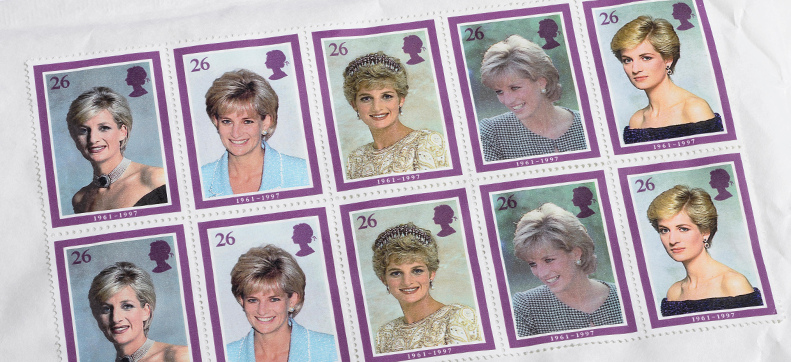
Mandela later praised Diana for her efforts surrounding the issue of HIV/AIDS: “When she stroked the limbs of someone with leprosy or sat on the bed of a man with HIV/AIDS and held his hand, she transformed public attitudes and improved the life chances of such people”. In October 2017, Attitude magazine honoured Diana with its Legacy Award for her HIV/AIDS work. Prince Harry accepted the award on behalf of his mother.
In November 1989, the Princess visited a leprosy hospital in Indonesia. Following her visit, she became patron of the Leprosy Mission, an organisation dedicated to providing medicine, treatment, and other support services to those who are afflicted with the disease.
She remained the patron of this charity and visited several of its hospitals around the world, especially in India, Nepal, Zimbabwe and Nigeria until her death in 1997.
She touched those affected by the disease when many people believed it could be contracted through casual contact. “It has always been my concern to touch people with leprosy, trying to show in a simple action that they are not reviled, nor are we repulsed,” she commented.
Diana was the patron of HALO Trust, an organisation that removes debris – particularly landmines – left behind by war. In January 1997, pictures of Diana touring an Angolan minefield in a ballistic helmet and flak jacket were seen worldwide.
Her work on the landmines issue has been described as influential in the signing of the Ottawa Treaty, which created an international ban on the use of anti-personnel landmines.
Introducing the Second Reading of the Landmines Bill 1998 to the British House of Commons, the Foreign Secretary, Robin Cook, paid tribute to Diana’s work on landmines: “All Honourable members will be aware from their postbags of the immense contribution made by Diana, Princess of Wales to bringing home to many of our constituents the human costs of landmines. The best way in which to record our appreciation of her work, and the work of NGOs that have campaigned against landmines, is to pass the Bill, and to pave the way towards a global ban on landmines.”
A few months after Diana’s death in 1997, the International Campaign to Ban Landmines won the Nobel Peace Prize.
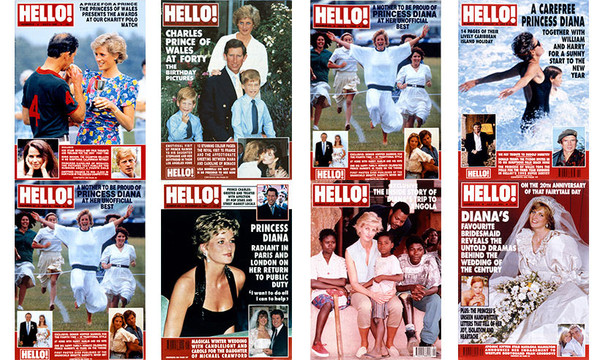
Diana was a fashion icon whose style was emulated by women around the world.
The Princess has been an inspiration for stylists, celebrities, and young women, including the singer Rihanna who is influenced by her and during an interview by Glamour in 2013 said: “[Diana] killed it. Every look was right. She was gangsta with her clothes. She had these crazy hats. She got oversize jackets. I loved everything she wore!”
The Princess chose her dressing style based on both the royal family’s demands and popular modern styles in Britain, and developed her personal fashion trend.
Diana chose not to practise some of the royal clothing traditions such as putting aside the tradition of wearing gloves as she believed it would prevent a direct connection with the people she met, such as those affected by serious diseases like AIDS patients.
Throughout the 1980s and 1990s, the Princess wore outfits and ensembles by numerous notable fashion designers. She also wore ensembles by fashion companies such as Versace, Armani, Chanel, Dior and Clarks.
Among her iconic outfits are a décolleté by David and Elizabeth Emanuel worn by a newly engaged Diana at a charity event, a cocktail dress by Christina Stambolian, commonly known as the ‘Revenge Dress’, which she wore after Charles’s admission of adultery, an evening gown by Victor Edelstein that she wore to a reception at the White House and later became known as the ‘Travolta dress’, and a Catherine Walker pearl-encrusted gown and jacket dubbed the ‘Elvis Dress’, which she wore for the first time on an official visit to Hong Kong.
In early 1980s, Diana preferred to wear dresses with floral collars, pie-crust blouses, and pearls. These items rapidly became fashion trends. Copies of her Vogue-featured pink chiffon blouse by David and Elizabeth Emanuel, which appeared on the magazine’s cover on her engagement announcement day, sold in the millions.
The Princess was named to the International Best Dressed List Hall of Fame in 1989. In 2004, People cited her as one of the all-time most beautiful women. In 2012, Time included Diana on its All-TIME 100 Fashion Icons list.
Eugene Robinson, of The Washington Post, wrote in an article that “Diana imbued her role as royal princess with vitality, activism and, above all, glamour.”
In 1999, Time magazine named Diana one of the 100 Most Important People of the 20th Century. In 2002, Diana ranked third on the BBC’s poll of the 100 Greatest Britons, above the Queen and other British monarchs.
In January 2017, Diana’s sons commissioned a statue of their mother for Kensington Palace to commemorate the 20th anniversary of her death. In an official statement released by Kensington Palace, William and Harry said: “Our mother touched so many lives. We hope the statue will help all those who visit Kensington Palace to reflect on her life and her legacy.”
In August 2020, it was announced that the statue would be installed in the Sunken Garden of Kensington Palace on July 1, 2021, which would have been her 60th birthday.
The princes also commissioned two documentaries. The first of the two, Diana, Our Mother: Her Life and Legacy, was broadcast on ITV and HBO on July 24, 2017. This film focuses on Diana’s legacy and humanitarian efforts for causes such as AIDS, landmines, homelessness and cancer. The second documentary, Diana, 7 Days, aired a month later on the BBC and focused on Diana’s death and the subsequent outpouring of grief.
Writing for The Guardian, Monica Ali described Diana as “a one-off, fascinating and flawed. Her legacy might be mixed, but it’s not insubstantial. Her life was brief, but she left her mark”.